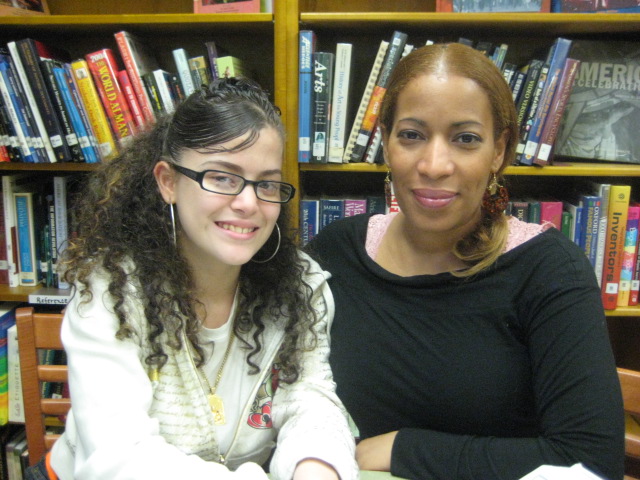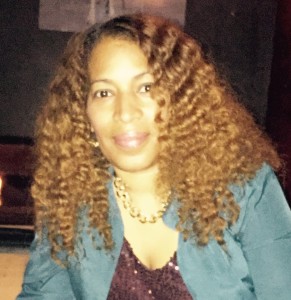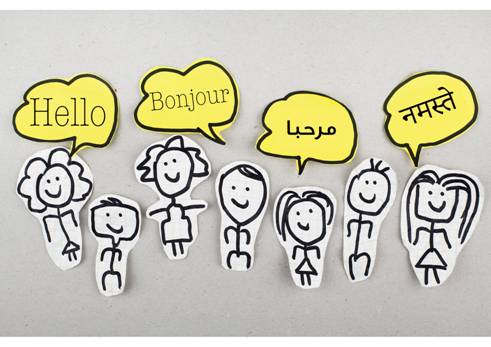
By: Cristina Hernandez
My friend Jeff does not speak Spanish. I mean, he has a few college-Spanish-words in his back pocket but not enough to teach to a bilingual, mostly Spanish speaking audience. And yet, in April of 2000 that’s exactly what he was doing. His teaching partner, Emily, had even less Spanish than he did. She could maybe say “Hola” and “Si, senor”. So, Jeff, a Teaching Artist with ENACT, asked me if I could help him and Emily with a class at the school where he worked.
I was born in the Dominican Republic and spoke fluent Spanish. Jeff was a good friend. So, I said, “Sure, I’ll help”. I had no idea what I was getting into.
I joined Jeff and Emily as a special guest in the classroom for the entire year. Jeff and Emily swore that the group came alive because I was able to speak to the kids in Spanish.
I spoke Spanish. I translated. I learned.
As it turned out, it was not only a great experience for the kids, but for me. It was exciting and fulfilling for me to work in the classroom. I had no idea that I could be a “Teaching Artist.” When Jeff first told me that he was a Teaching Artist, I thought it had something do with watercolors. Anyway, by September of 2000 Jeff encouraged me to come work for ENACT officially. He said I was a natural.
Early on I worked all over the five boroughs: Manhattan, the Bronx, Brooklyn, Queens and Staten Island, and even in far away and exotic locations like New Jersey! The groups would range from 1st grade to high school, from Special Ed to Regular Ed, with teachers often named Ed. It is interesting and mind expanding to be working in the five boroughs because you get to travel to different ethnic neighborhoods and learn about them through the students you meet. It’s like traveling the world without a passport or the need for extra vaccinations. The vibrant and varying ethnic tapestry of New York creates opportunity to learn and grow in exciting and challenging ways. It is pretty amazing.
I found myself playing theater games and creating scenes, helping the kids develop their ability to think on their feet and develop skills in creativity and emotional awareness. Through play and humor we all learned how to work as a community, find our voice, and accept each other as we were. I learned these skills right alongside the kids.
Throughout the years I have had so many great moments in the classroom: teaching, helping, mentoring and creating art with hundreds of school kids. I have partnered with amazingly talented Teaching Artists as well as concerned parents who love their babies and only want the best for them. I have given and also received so much from all of them – high on the list: how to make the perfect Sofrito.
Many of the kids I’ve worked with throughout the years were also Dominican and they felt comfortable with me. I was familiar. We were all from DR. They would often ask me questions about when I lived in DR and how I adjusted to being in a new country. And they often said my stories would actually help them feel less alone, to know that they too could adjust to living in a new country.
My Dominican background was also important when meeting the parents of the Spanish speaking children, who also often did not speak English. I would put them at ease and explain in Spanish what ENACT was. “No, we do not sell mint cookies. Yes, we are a type of performance group. No, we cannot introduce you to Ricky Martin.” Once we got that out of the way, they felt comfortable with me and would often reach out if they needed help with any aspect of their children’s school issues. This rounded support system made the kids more open and trusting; therefore, they would take more chances in class and speak up when they had a thought, a good idea, or the need to express themselves. The more they spoke up, the more I could get involved. It became a circle of care and progression.
If you have not guessed by now, humor is a big part of the way I get the kids to trust me. I do not have a problem being silly as a way to break the ice. When I go into the classroom and tell a joke, even a bad joke, the students love that I’m taking that risk and it helps them to relax, trust, participate and take risks too.
I once worked with a particular student in the middle school where I am stationed now, full-time, as a Teaching Artist and Site Director. She was part of the ENACT after-school program in sixth, seventh, and eighth grade until she graduated from middle school. When she first started with me she was very shy and was still learning English. It was hard for her sometimes to participate. I started giving her encouragement and extra attention often using humor to get her involved. She went from being a shy young lady who barely spoke English, to President of the United States…okay, I went too far. But you never know. No, she did not become President, not yet, but she did end up being one of our top performers at our annual ShowUp! Gala. Each year the kids perform original plays in front of parents, peers, and their community to proudly present themselves as kids who show up to school to learn and excel. She speaks fluent English now and was also one of the students selected for Derek Jeter’s Leaders organization for youth. Derek was right, we could certainly use leaders like this young lady. Next stop, the White House.
I have had so many students who improved their English and became open to trying new things. Students who have found courage, who now speak up for themselves, their issues, and their educational needs. These skills are especially needed right now and these kids are inspirational to me in this way. On the flip side, it is also a great feeling when you have kids chasing you outside of the school years after they graduate: “Hey! Cristina, the ENACT lady!” It is like being a local celebrity or the Gingerbread Man.
Besides celebrity status, this work has truly been a gift for me. It is not only very special when you see a student transform in front of your very eyes, but it also makes you feel proud that you had something to do with it. Like a parent, without all that waking up at 3 a.m. and changing diapers. Being able to give children and their parents some major tools that they can use to deal with the slings and arrows of life has been a gift that keeps on giving.
 Cristina Hernandez hails from the Dominican Republic and has been a NYC Teaching Artist with ENACT for the last fifteen years. Cristina is an actor, writer, and founding member of the CityKids Repertory Company. She is currently the Site Director and a TA for a middle school in the Bronx. She brings her talents, her experience as a bilingual Latina female raised in the South Bronx, her humor and her heart to every teachable moment in which she participates.
Cristina Hernandez hails from the Dominican Republic and has been a NYC Teaching Artist with ENACT for the last fifteen years. Cristina is an actor, writer, and founding member of the CityKids Repertory Company. She is currently the Site Director and a TA for a middle school in the Bronx. She brings her talents, her experience as a bilingual Latina female raised in the South Bronx, her humor and her heart to every teachable moment in which she participates.


